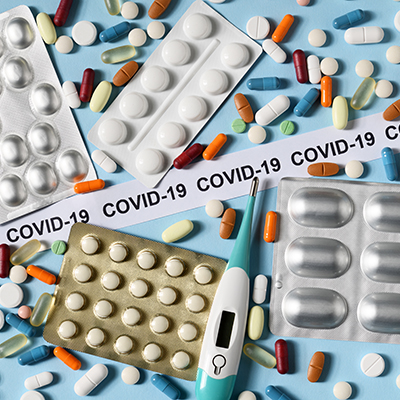June 25, 2020 -- Computer-based tools are helping researchers find potentially promising candidates for vaccines and treatments for SARS-CoV-2 -- and much more quickly than traditional approaches. Many of these software tools are described in an article published June 24 in Science Advances.
The rapid genome sequencing of SARS-CoV-2 has allowed researchers to determine key targets for therapeutic and diagnostic purposes, including candidates that target the spike glycoprotein and the main protease of the virus. While many researchers are working to develop novel antiviral drugs, others are focusing on repurposing existing drugs.
These development efforts are being accelerated by software-based in silico approaches to drug design that include molecular modeling, virtual screening of drug candidates, and receptor-drug molecular dynamics simulation -- all approaches that can facilitate the identification of antiviral drugs against SARS-CoV-2.
New in silico computational strategies to shorten drug development
Swedish researchers conducted high-throughput virtual screening of 640 antiviral compounds from the Chemical library of the European Molecular Biology Laboratory (ChEMBL) database that pass the Lipinski rule of five, a set of guidelines for determining whether a chemical compound might make an attractive drug candidate. They employed Autodock Vina, an open-source program for molecular docking, to try to find candidates that could prove useful against the SARS-CoV-2 virus's spike protein and main protease.
Antiviral polymerase inhibitor PC786 (ChEMBL ID 4291143) was demonstrated to be the most promising among all of the antiviral drugs screened against both the spike protein and the main protease receptors. It is a nonnucleotide inhibitor of respiratory syncytial virus (RSV) polymerase that inhibits replications of both the A and B subtypes of the virus, thereby blocking infection in the respiratory tract. The drug has already passed safety and tolerability tests in both preclinical and phase I and II clinical trials. Molecular docking analysis showed that the drug has the best binding affinity with the spike protein and the main protease of SARS-CoV-2.
For comparison, the researchers identified several additional U.S. Food and Drug Administration (FDA)-approved drugs (lorecivivint, tegavivint, and dolutegravir) that showed binding affinity toward the targets.
Molecular dynamics simulations and post-docking analyses with the Chimera software from the University of California, San Francisco, revealed that PC786 retains native bonding patterns with the spike protein receptor, confirming its increased stability and binding affinity toward the target as compared to the other FDA-approved drugs. This is additionally established by binding free energy calculations, which identify the favorable binding of antiviral drugs, particularly PC786, with SARS-CoV-2 spike and main protease proteins.
Furthermore, the researchers demonstrated that when antiviral drugs bind to the spike protein of SARS-CoV-2, the binding affinities of SARS-CoV-2 to the angiotensin-converting enzyme 2 (ACE2) receptor become lower.
In a different tactic, the researchers applied immunoinformatics using bioinformatics to design different vaccine candidates for SARS-CoV-2 to assess their potential as an alternative method to currently used vaccine development approaches. B-cell epitopes were identified using a structure-based approach used to identify human leukocyte antigens and T-cell epitopes. The study also unraveled six T-cell epitopes for the spike protein and eight T-cell epitopes for the main protease protein.
This structure-based immunoinformatics approach may help researchers identify vital structural domains and active sites that provide a basis to develop protein-based vaccines targeting the spike proteins of SARS-CoV-2.
The researchers stressed that the proposed in silico strategies could significantly reduce the resources and expenses involved with experimental and clinical studies for drugs against SARS-CoV-2. Moreover, they suggested that their proposed approaches provide a higher probability of obtaining desired responses with fewer trials and mistakes.
Ultimately, effective use of informatics in drug design could reduce the translational distance between preclinical tests and clinical outcomes for overcoming the current SARS-CoV-2 pandemic.
Do you have a unique perspective on your research related to drug discovery and development? Contact the editor today to learn more.
Copyright © 2020 scienceboard.net








